But this review is about action cameras actually made by GoPro, as we look at the best GoPro camera. In some ways, this is easy. Four GoPro models are currently widely available. And the latest model is the best in many ways. But the best GoPro camera for you might not be the same as for me. You might have a different budget. Or you might want a 360-degree camera. So we will try to unpack what is best for you by examining the pros and cons of each of the available models. The main differences are in video quality, image quality, and a range of other features. Keep reading as we go through the details of the best GoPro cameras available today. [Note: ExpertPhotography is supported by readers. Product links on ExpertPhotography are referral links. If you use one of these and buy something, we make a little bit of money. Need more info? See how it all works here.]
Comparison of Similarities Between GoPro Camera Models
The classic action camera shape, pioneered by GoPro, is usually safely encased in a clear plastic protective case. This gave waterproof protection down to 197’ (60m). The latest GoPro cameras have built-in waterproof protection to at least 33’ (10m). The traditional external clear case is also available except for the GoPro Max. All current GoPro cameras shoot in at least 4K video. And they all have a version of GoPro’s HyperSmooth video stabilization. Slow-motion capture is possible between 2x and 8x slower than the standard frame rate. Still photos are at least 12 MP with HDR capability. All have a rear touchscreen, and a massive range of mounts are available. These cameras no longer need an external case. Two “fingers” fold out from the camera’s base to provide the familiar mounting point. Another feature common to all four current GoPro camera models is TimeWarp video. This allows you to record a time-lapse video with image stabilization. It’s a very popular effect and very effective when used effectively. Normal time-lapse is also available. All the current GoPro models come with voice control. This is quite handy if you want to be in the picture or video and your hands are full. GPS, livestreaming, face detection, and wind-noise reduction are common on all models. Connectivity comes from Wi-Fi and Bluetooth. A GoPro subscription gives you automatic cloud backup. Finally, they all have some iteration of what GoPro calls “digital lenses.” This is a fancy way of describing an auto-crop facility. That’s basically what all the GoPro cameras currently on sale have in common. They also all have access to a collection of OEM and third-party accessories. There are helmet mounts, chest mounts, dog mounts, gimbals, and many other mounting options. All the cameras use the GoPro app—Quik. Quik can also use imports from your phone or other cameras. And now it’s time to take an in-depth look at the cameras to help you find the best GoPro camera for you. We will start with the outlier in the pack, the GoPro MAX.
4 Best GoPro Cameras
1. GoPro MAX
It has been possible for a while to strap two GoPro cameras together and blend their 170-degree images to produce a 360-degree video or photo. With the MAX, GoPro has its own dedicated 360 camera. It’s also an outlier in looks, with more of a square shape than the usual rectangle. Other than that, it looks like a GoPro camera, but there’s a lens on both sides. The MAX has a touchscreen on the rear of the camera. In fact, this is the way to tell this is the reverse side, as it also has a lens. It is the 360-degree capability that sets the MAX apart, so let’s start there. The GoPro execution of 360-degree video is impressive. It looks as though a closely-following drone is filming the subject. And all of this in 6K. The sound should match the footage well, recorded via three stereo pairs of microphones. The 360-degree video shares this audio with conventional GoPro camera capabilities. Action cam footage, which by its very nature, is subject to lots of jiggling. The Hypersmooth image stabilization (IS) system is ideally-suited to combatting this. There is a MAX version of TimeWarp—a time-lapse video recording from a moving camera viewpoint. The resulting 360-degree videos are very eye-catching. You can also use the GoPro Max as a conventional GoPro HERO camera. In this mode, it can take standard time-lapse (not available in 360-degree mode), 2x slow-motion, and use face and smile detection. You don’t get a front-facing screen with the GoPro MAX. Instead, you can simply choose to use the other lens when in HERO mode. When shooting 360-degree footage, you choose which lens you want to monitor via the touchscreen. Still photography gives you 5.5 MP in GoPro HERO MAX mode or a 6.2 MP “PowerPano” panoramic photo. There’s no automatic HDR, but horizon leveling works in HERO mode. The MAX also has max superview, wide, linear, and narrow digital lenses. Does the GoPro Max make the other HERO cameras obsolete? Not really. However, the differences are most significant with the newest and most expensive—the GoPro HERO10 Black. Waterproofing, for instance, is only down to 16’ (5 m). And there’s no OEM waterproof case to take it deeper. Some users report disappointing battery life with the GoPro MAX, but it is doing some pretty heavy lifting. You can supplement the 1600mAh battery with a second battery that comes with a dual charger. So before we get to the Max 10, let’s take a look at the cheapest GoPro camera currently available, the HERO8 Black. However, availability might be patchy with the GoPro Hero8 Black.
2. GoPro HERO8 Black
The basic specs for the GoPro Hero8 are a 12 MP camera with SuperPhoto and HDR. SuperPhoto claims to adjust tone-mapping, noise reduction, or HDR to make the best of each photo. Digital lenses give you narrow, linear, wide, and superview. Linear is a photo without any hint of fish-eye distortion. And there’s a 3 and 10-second self-timer. LiveBurst gives you a superhero’s ability to capture a burst of photos starting 1.5 seconds before you hit the shutter button. Max video resolution is up to 4K at 60 fps. And 1080p is possible at 240 fps on the wide-angle lens in a 16:9 aspect ratio. This produces a pretty impressive 8x slo-mo video. In addition to the time-lapse and TimeWarp on the MAX, the GoPro Hero8 expands into nighttime time-lapse with NightLapse video. Other advantages over the MAX include the improved waterproofing down to 33’ (10 m). This is made even better by the availability of a waterproof housing that protects the camera down to 196’ (60 m).
The GoPro Hero8 Black has a color touch screen on the back for customizing various functions. A monochrome front-facing screen shows the mode, memory card, and battery status. There is a Media Mod available. This is a housing that holds a directional microphone, a 3.5mm jack for an external mic, and an HDMI output. Widely-available accessories, such as lights or microphones, attach via two cold shoe mounts. The 1220mAh battery governs battery life, and some users report less than 1.5 hours of use. A twin charger is available as an optional extra. And it might be worth looking for a deal that includes a spare battery and a twin charger. If you don’t need 360-degree footage, then the GoPro Hero8 Black gives an entry point into the world of GoPro cameras with a reasonably comprehensive set of features.
3. GoPro HERO9 Black
Distinguishable from the GoPro Hero8 by the color front-facing screen, the HERO 9 adds several other upgrades as well. The max video resolution is enhanced to 5K. Like the GoPro HERO8, you can shoot 240 fps at 1080p with the wide-angle lens, giving you 8x slow-motion. Video image stabilization gets a newer version (3.0). And the digital lenses have the addition of linear with horizon leveling. This keeps the horizon level even when the camera is tilted. The front-facing screen makes taking selfies easier, giving a live preview and the status of the various functions. In addition to the LiveBurst feature, HindSight takes the concept and applies it to video. Hindsight captures 30 seconds of video even before you push the record button. There is a broader range of mods available for the GoPro HERO9. It has a detachable lens, which can be easily removed by a press and anti-clockwise turn. In its place, you can use the Max Lens Mod, which not only gives a 155-degree field of view but also enhances the IS. Still photography features a 20 MP sensor and the ability to capture 14.7 MP stills from videos. This seems to be the most significant of all the improvements between GoPro Hero8 and HERO9. Still photos grabbed from videos have a higher resolution than the HERO8’s main camera sensor.
With the GoPro HERO9, the manufacturers introduced the Enduro battery. The nominal capacity of 1720mAh is the same as the standard one. But GoPro claims up to 40% better performance when under high demand and better cold-weather performance. The supercharger promises 38% faster charging if a quick recharge is required. As you can see, in other respects, the improvements are evolutionary rather than revolutionary. Can the same be said for the next generation—the GoPro HERO10 Black?
4. GoPro HERO10 Black
One of the main improvements to the HERO10 is a new processing chip. GoPro claim speeds twice as fast as the GP1 chip found in their other cameras. The change from 20 MP photos to 23 MP again seems evolutionary. But the video stills are only 19 MP, which is less than the main sensor on the HERO9, but still pretty good. That adds a lot of flexibility to your filming choices. The max video resolution of 5.3K is another small improvement. But it captures that 5.3K at up to 60 fps rather than 30. The HERO10 includes Hypersmooth 4.0. This is the award-winning implementation of their image stabilization technology. Horizon leveling in-camera is improved. It can compensate for up to 45 degrees of tilt. And low-light performance is better on the HERO10. Once you have captured your images, you need to transfer them to your camera. One welcome improvement is the ability to connect the GoPro camera by cable to your phone to download your digital content. Wi-Fi has always been available, but the cable adds reliability. One result of the upgraded chip is an across-the-board improvement in functions. The front display isn’t necessarily an upgrade. But the way the camera is able to use it is improved. Previously, the slow frame rate could make the videos jerky and difficult to follow. Now they are smooth and much easier to use. Similarly, the touchscreen is more responsive. GoPro has been able to improve performance across a range of factors. Low light noise reduction and limitless horizon correction are some areas they have improved.
The 1720mAh battery (Enduro or standard) is the same as that in the GoPro HERO9. The GoPro HERO10’s lens has a hydrophobic coating. In previous models, a single water droplet on the lens could spell a ruined set of photos or video footage.
Which is the Best GoPro Camera for You?
First of all, let’s deal with the GoPro Max. 360-degree cameras are becoming more commonplace. But they still haven’t entered the mainstream as much as manufacturers had hoped. The GoPro Max is a great choice if you want a capable 360-degree action cam. In most other respects, it falls short of the cheapest alternative here, the GoPro HERO8. With that said, it offers decent action camera performance if 360 mode is your main thing and you want an occasional “normal” GoPro camera. In this case, the GoPro Max is the best GoPro camera for you. But with today’s best deals, it’s difficult to ignore the GoPro HERO10. There is a significant jump in performance across the board between the GoPro Hero8 and the HERO10. The GoPro HERO9 is clearly a better camera than its predecessor, but not as good as the HERO10. Ultimately, if the budget can stretch to it, then the incremental improvements make the HERO10 a better choice than the GoPro HERO9. For action photography, it will produce professional-looking results. On top of that, the new chip’s performance enhancements are a big step up. They mean that the GoPro HERO10 will provide you with a better user experience and better results across a wide range of situations. Check out our Total Time-Lapse course to make the most of GoPro’s time-lapse and TimeWarp modes!
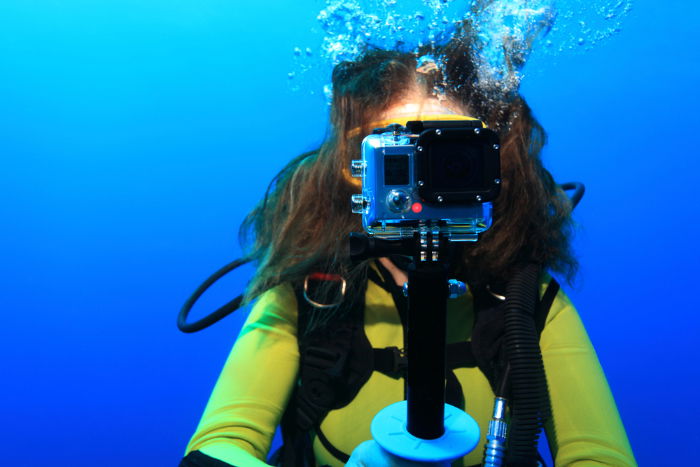


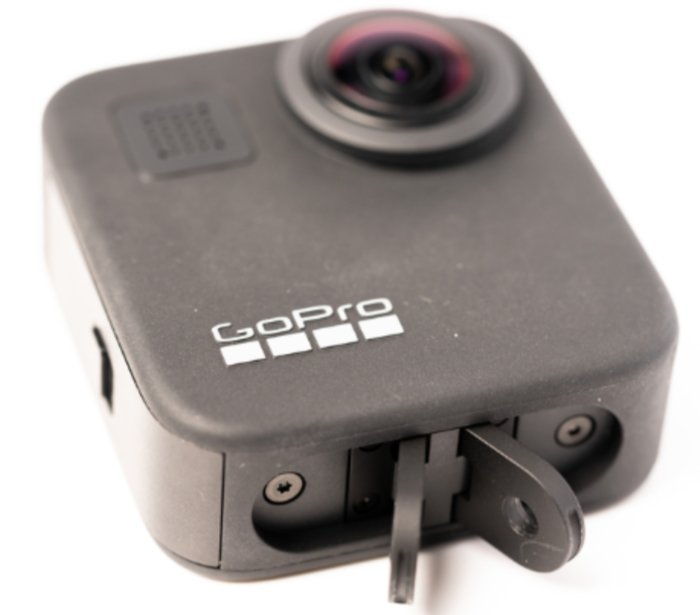
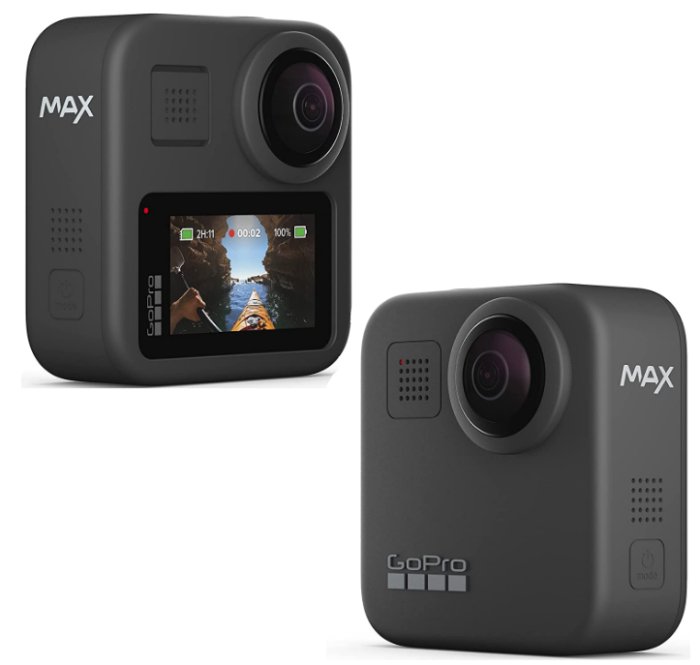
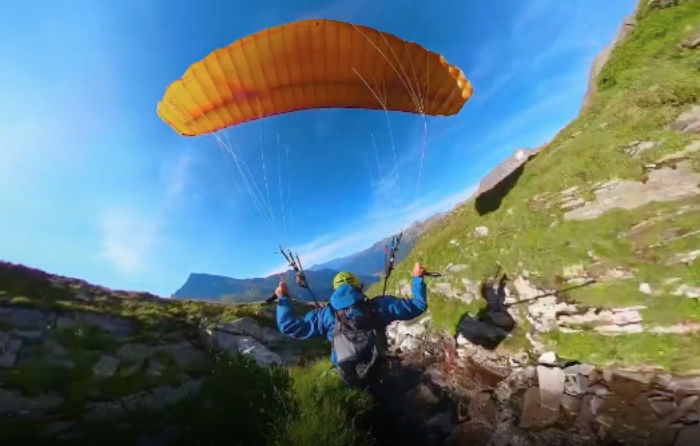
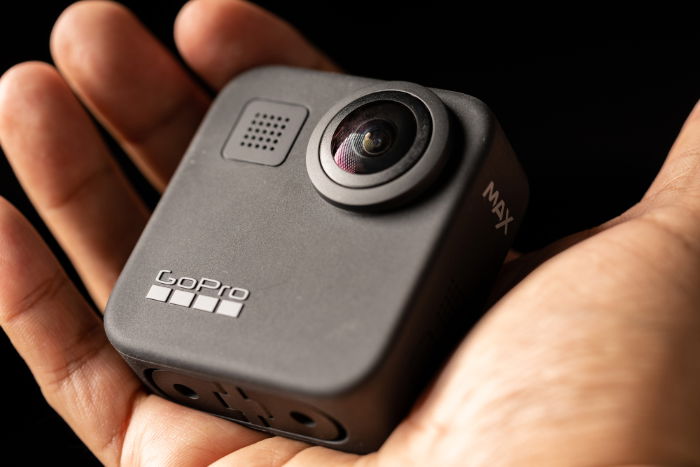
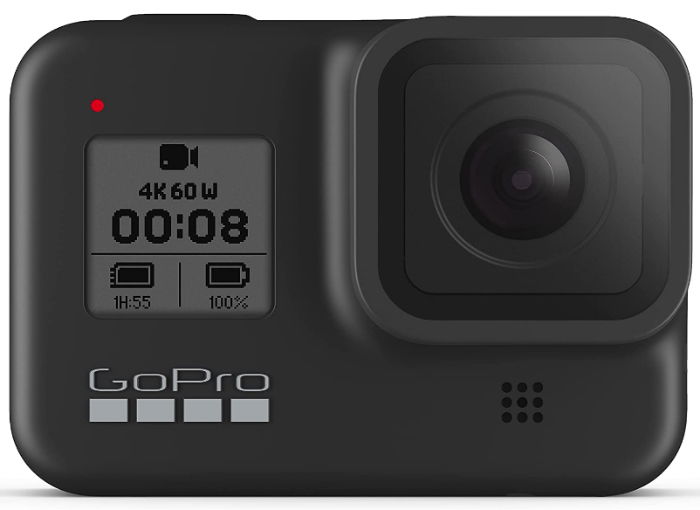

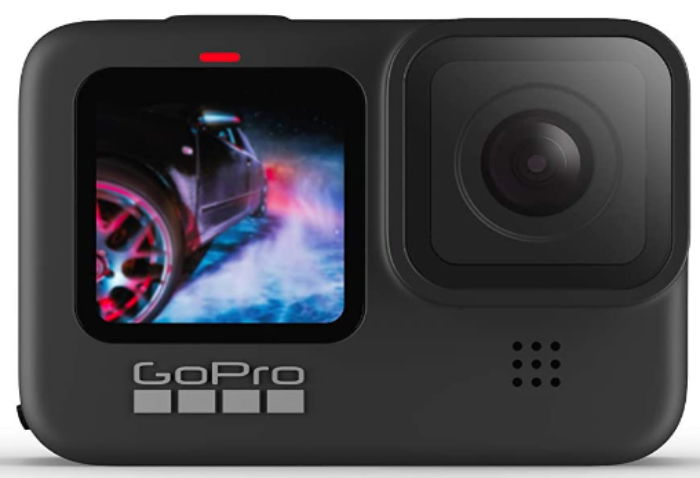
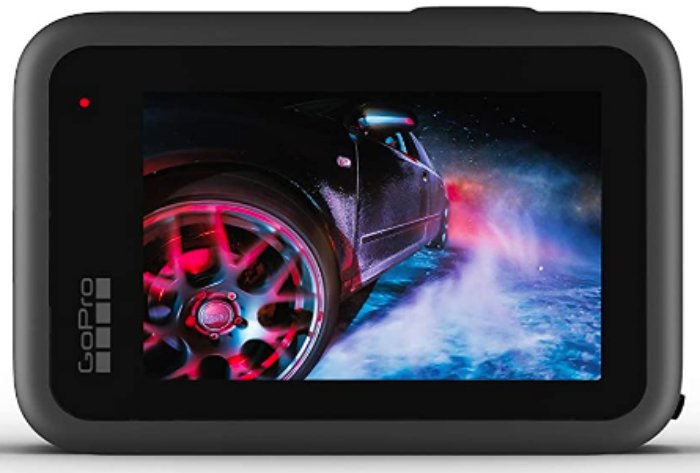
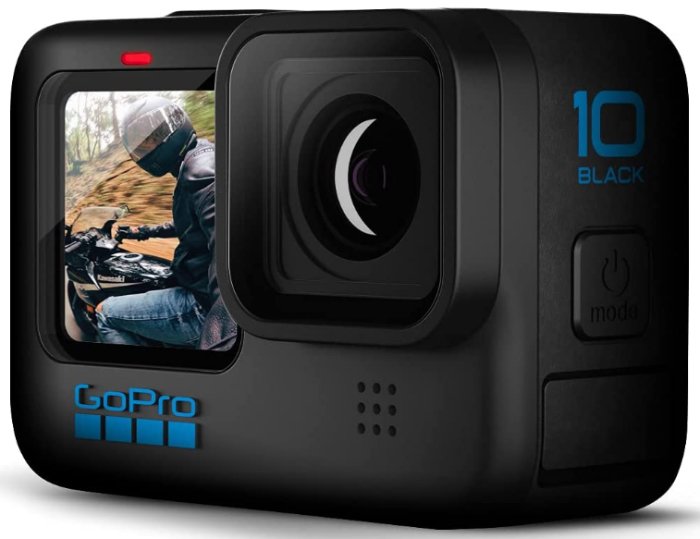
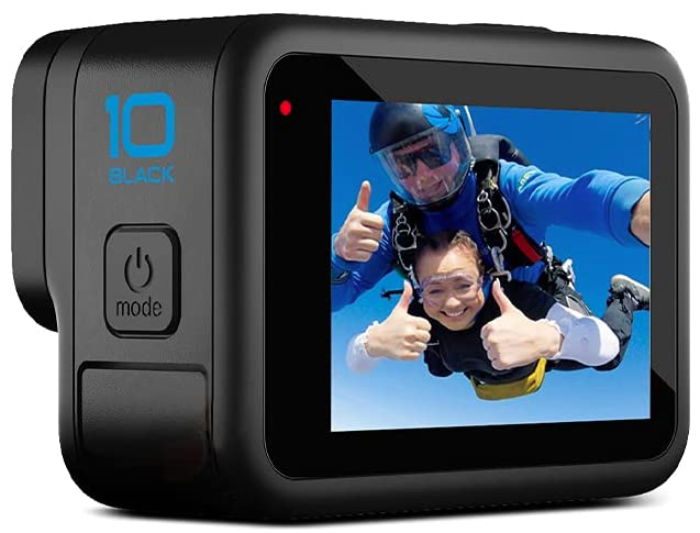
title: “4 Best Gopro Cameras In 2023 How To Choose Yours " ShowToc: true date: “2023-01-26” author: “Betty Ramos”
But this review is about action cameras actually made by GoPro, as we look at the best GoPro camera. In some ways, this is easy. Four GoPro models are currently widely available. And the latest model is the best in many ways. But the best GoPro camera for you might not be the same as for me. You might have a different budget. Or you might want a 360-degree camera. So we will try to unpack what is best for you by examining the pros and cons of each of the available models. The main differences are in video quality, image quality, and a range of other features. Keep reading as we go through the details of the best GoPro cameras available today. [Note: ExpertPhotography is supported by readers. Product links on ExpertPhotography are referral links. If you use one of these and buy something, we make a little bit of money. Need more info? See how it all works here.]
Comparison of Similarities Between GoPro Camera Models
The classic action camera shape, pioneered by GoPro, is usually safely encased in a clear plastic protective case. This gave waterproof protection down to 197’ (60m). The latest GoPro cameras have built-in waterproof protection to at least 33’ (10m). The traditional external clear case is also available except for the GoPro Max. All current GoPro cameras shoot in at least 4K video. And they all have a version of GoPro’s HyperSmooth video stabilization. Slow-motion capture is possible between 2x and 8x slower than the standard frame rate. Still photos are at least 12 MP with HDR capability. All have a rear touchscreen, and a massive range of mounts are available. These cameras no longer need an external case. Two “fingers” fold out from the camera’s base to provide the familiar mounting point. Another feature common to all four current GoPro camera models is TimeWarp video. This allows you to record a time-lapse video with image stabilization. It’s a very popular effect and very effective when used effectively. Normal time-lapse is also available. All the current GoPro models come with voice control. This is quite handy if you want to be in the picture or video and your hands are full. GPS, livestreaming, face detection, and wind-noise reduction are common on all models. Connectivity comes from Wi-Fi and Bluetooth. A GoPro subscription gives you automatic cloud backup. Finally, they all have some iteration of what GoPro calls “digital lenses.” This is a fancy way of describing an auto-crop facility. That’s basically what all the GoPro cameras currently on sale have in common. They also all have access to a collection of OEM and third-party accessories. There are helmet mounts, chest mounts, dog mounts, gimbals, and many other mounting options. All the cameras use the GoPro app—Quik. Quik can also use imports from your phone or other cameras. And now it’s time to take an in-depth look at the cameras to help you find the best GoPro camera for you. We will start with the outlier in the pack, the GoPro MAX.
4 Best GoPro Cameras
1. GoPro MAX
It has been possible for a while to strap two GoPro cameras together and blend their 170-degree images to produce a 360-degree video or photo. With the MAX, GoPro has its own dedicated 360 camera. It’s also an outlier in looks, with more of a square shape than the usual rectangle. Other than that, it looks like a GoPro camera, but there’s a lens on both sides. The MAX has a touchscreen on the rear of the camera. In fact, this is the way to tell this is the reverse side, as it also has a lens. It is the 360-degree capability that sets the MAX apart, so let’s start there. The GoPro execution of 360-degree video is impressive. It looks as though a closely-following drone is filming the subject. And all of this in 6K. The sound should match the footage well, recorded via three stereo pairs of microphones. The 360-degree video shares this audio with conventional GoPro camera capabilities. Action cam footage, which by its very nature, is subject to lots of jiggling. The Hypersmooth image stabilization (IS) system is ideally-suited to combatting this. There is a MAX version of TimeWarp—a time-lapse video recording from a moving camera viewpoint. The resulting 360-degree videos are very eye-catching. You can also use the GoPro Max as a conventional GoPro HERO camera. In this mode, it can take standard time-lapse (not available in 360-degree mode), 2x slow-motion, and use face and smile detection. You don’t get a front-facing screen with the GoPro MAX. Instead, you can simply choose to use the other lens when in HERO mode. When shooting 360-degree footage, you choose which lens you want to monitor via the touchscreen. Still photography gives you 5.5 MP in GoPro HERO MAX mode or a 6.2 MP “PowerPano” panoramic photo. There’s no automatic HDR, but horizon leveling works in HERO mode. The MAX also has max superview, wide, linear, and narrow digital lenses. Does the GoPro Max make the other HERO cameras obsolete? Not really. However, the differences are most significant with the newest and most expensive—the GoPro HERO10 Black. Waterproofing, for instance, is only down to 16’ (5 m). And there’s no OEM waterproof case to take it deeper. Some users report disappointing battery life with the GoPro MAX, but it is doing some pretty heavy lifting. You can supplement the 1600mAh battery with a second battery that comes with a dual charger. So before we get to the Max 10, let’s take a look at the cheapest GoPro camera currently available, the HERO8 Black. However, availability might be patchy with the GoPro Hero8 Black.
2. GoPro HERO8 Black
The basic specs for the GoPro Hero8 are a 12 MP camera with SuperPhoto and HDR. SuperPhoto claims to adjust tone-mapping, noise reduction, or HDR to make the best of each photo. Digital lenses give you narrow, linear, wide, and superview. Linear is a photo without any hint of fish-eye distortion. And there’s a 3 and 10-second self-timer. LiveBurst gives you a superhero’s ability to capture a burst of photos starting 1.5 seconds before you hit the shutter button. Max video resolution is up to 4K at 60 fps. And 1080p is possible at 240 fps on the wide-angle lens in a 16:9 aspect ratio. This produces a pretty impressive 8x slo-mo video. In addition to the time-lapse and TimeWarp on the MAX, the GoPro Hero8 expands into nighttime time-lapse with NightLapse video. Other advantages over the MAX include the improved waterproofing down to 33’ (10 m). This is made even better by the availability of a waterproof housing that protects the camera down to 196’ (60 m).
The GoPro Hero8 Black has a color touch screen on the back for customizing various functions. A monochrome front-facing screen shows the mode, memory card, and battery status. There is a Media Mod available. This is a housing that holds a directional microphone, a 3.5mm jack for an external mic, and an HDMI output. Widely-available accessories, such as lights or microphones, attach via two cold shoe mounts. The 1220mAh battery governs battery life, and some users report less than 1.5 hours of use. A twin charger is available as an optional extra. And it might be worth looking for a deal that includes a spare battery and a twin charger. If you don’t need 360-degree footage, then the GoPro Hero8 Black gives an entry point into the world of GoPro cameras with a reasonably comprehensive set of features.
3. GoPro HERO9 Black
Distinguishable from the GoPro Hero8 by the color front-facing screen, the HERO 9 adds several other upgrades as well. The max video resolution is enhanced to 5K. Like the GoPro HERO8, you can shoot 240 fps at 1080p with the wide-angle lens, giving you 8x slow-motion. Video image stabilization gets a newer version (3.0). And the digital lenses have the addition of linear with horizon leveling. This keeps the horizon level even when the camera is tilted. The front-facing screen makes taking selfies easier, giving a live preview and the status of the various functions. In addition to the LiveBurst feature, HindSight takes the concept and applies it to video. Hindsight captures 30 seconds of video even before you push the record button. There is a broader range of mods available for the GoPro HERO9. It has a detachable lens, which can be easily removed by a press and anti-clockwise turn. In its place, you can use the Max Lens Mod, which not only gives a 155-degree field of view but also enhances the IS. Still photography features a 20 MP sensor and the ability to capture 14.7 MP stills from videos. This seems to be the most significant of all the improvements between GoPro Hero8 and HERO9. Still photos grabbed from videos have a higher resolution than the HERO8’s main camera sensor.
With the GoPro HERO9, the manufacturers introduced the Enduro battery. The nominal capacity of 1720mAh is the same as the standard one. But GoPro claims up to 40% better performance when under high demand and better cold-weather performance. The supercharger promises 38% faster charging if a quick recharge is required. As you can see, in other respects, the improvements are evolutionary rather than revolutionary. Can the same be said for the next generation—the GoPro HERO10 Black?
4. GoPro HERO10 Black
One of the main improvements to the HERO10 is a new processing chip. GoPro claim speeds twice as fast as the GP1 chip found in their other cameras. The change from 20 MP photos to 23 MP again seems evolutionary. But the video stills are only 19 MP, which is less than the main sensor on the HERO9, but still pretty good. That adds a lot of flexibility to your filming choices. The max video resolution of 5.3K is another small improvement. But it captures that 5.3K at up to 60 fps rather than 30. The HERO10 includes Hypersmooth 4.0. This is the award-winning implementation of their image stabilization technology. Horizon leveling in-camera is improved. It can compensate for up to 45 degrees of tilt. And low-light performance is better on the HERO10. Once you have captured your images, you need to transfer them to your camera. One welcome improvement is the ability to connect the GoPro camera by cable to your phone to download your digital content. Wi-Fi has always been available, but the cable adds reliability. One result of the upgraded chip is an across-the-board improvement in functions. The front display isn’t necessarily an upgrade. But the way the camera is able to use it is improved. Previously, the slow frame rate could make the videos jerky and difficult to follow. Now they are smooth and much easier to use. Similarly, the touchscreen is more responsive. GoPro has been able to improve performance across a range of factors. Low light noise reduction and limitless horizon correction are some areas they have improved.
The 1720mAh battery (Enduro or standard) is the same as that in the GoPro HERO9. The GoPro HERO10’s lens has a hydrophobic coating. In previous models, a single water droplet on the lens could spell a ruined set of photos or video footage.
Which is the Best GoPro Camera for You?
First of all, let’s deal with the GoPro Max. 360-degree cameras are becoming more commonplace. But they still haven’t entered the mainstream as much as manufacturers had hoped. The GoPro Max is a great choice if you want a capable 360-degree action cam. In most other respects, it falls short of the cheapest alternative here, the GoPro HERO8. With that said, it offers decent action camera performance if 360 mode is your main thing and you want an occasional “normal” GoPro camera. In this case, the GoPro Max is the best GoPro camera for you. But with today’s best deals, it’s difficult to ignore the GoPro HERO10. There is a significant jump in performance across the board between the GoPro Hero8 and the HERO10. The GoPro HERO9 is clearly a better camera than its predecessor, but not as good as the HERO10. Ultimately, if the budget can stretch to it, then the incremental improvements make the HERO10 a better choice than the GoPro HERO9. For action photography, it will produce professional-looking results. On top of that, the new chip’s performance enhancements are a big step up. They mean that the GoPro HERO10 will provide you with a better user experience and better results across a wide range of situations. Check out our Total Time-Lapse course to make the most of GoPro’s time-lapse and TimeWarp modes!












